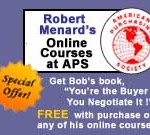Total Cost Of Ownership (TCO); The Single Most Important Principle In Supply Chain Management
Total Cost of Ownership (TCO) is the single most important principle in all of supply chain management. It quantifies and measures costs. The principle of TCO has impacted commercial negotiations by expanding the narrow confines of Price to a vast field of opportunities for attaining Win-Win results. Anyone can get a lower price. The object of good business is to attain the lowest TCO.
In professional purchasing, we can reduce the essence of everything that we do to a single word – Cost. Any discipline falling under the umbrella of Supply Chain Management can be interpreted and expressed in terms of Cost. Value and cost are related in that the Best Value means the lowest TCO.
Many business execs carelessly confuse the concepts of price and cost, using them interchangeably. To define them simply, price is the money coming in, cost is the money going out and profit is the difference. Profit is the remainder after subtracting cost from price. For this reason, cost management is crucial to business success. For two companies selling at competitive prices, the higher cost company realizes lower profits. Basic economics show that high costs are bad for business.
Well, what exactly is TCO, how is it measured and how does it affect negotiation? First, let us identify the four elements of cost and demonstrate the impact of each on TCO.
The four elements of cost are: Quality, Service, Delivery, and Price (QSDP)
TCO =the sum of the cost elements in QSDP, or TCO = Quality + Service + Delivery + Price
Several facts about TCO must be recognized and appreciated to conduct an effective negotiation:
- Each element of QSDP has an impact on the TCO
- The importance of each element varies with the product or service being purchased
- The relative weight of each element depends upon our assessment of the TCO impact on our business.
- The identity and weight of each element is an ongoing part of the continuous negotiation process.
Price is not only different from cost, but price in fact is merely one element of cost. The impact of the other elements usually dwarfs the impact of price. Let’s take the example of the sorry used car purchase.
“Have I got a deal for you”, intones the plaids and stripes used car salesman of stereotype. He means a deal on the price, certainly not the cost. By the time you pay for the new transmission, replace the leaky valves, and meet all the inspection standards, the total cost encourages you to reconsider the wisdom of alternative methods of transportation.
In order to negotiate effectively, buyers and sellers must understand and evaluate the cost impact of each of the four elements of QSDP. In fact, our negotiation plan, which we will map out in the next chapter, will be built around the TCO.
With the stress on quality in business today, is Quality is always the most important element of cost? Often it is. Take the case of medical goods such as heart valves for cardiac surgery. Assume further that you are the patient and it becomes quite obvious of the dominance that Quality enjoys in the TCO calculation.
Suppose though that you operate a hydraulic press line where one pump powers twenty presses and that pump fails. Do you then want a pump, any pump? Would you take a temporary replacement of too high or low a pressure until the correct pump comes in? More than likely, yes, “Just get me a pump! I’ll reduce the pressure or eliminate several presses.” In this case, Delivery far exceeds the impact of the other costs
Service tends to be more important in certain acquisitions such as high tech goods and services and in labor contract agreements. If the air conditioning goes down in your Alabama facility in July, you want someone, anyone to arrive on site with 15 minutes. Even an apprentice can check the gauges, fluid levels, belts, breakers, etc while awaiting arrival of the rest of the service crew.
Now we arrive at Price? Many times, Price is clearly and justifiably the most important element of cost. Small expense items are good examples. The purchase of No. 2 pencils is one. Quality is not a very big issue to most people. They are plentiful so Delivery falls out of the equation and what Service is involved with a pencil? So by default, the most important element is Price. If we are constantly focusing on Price alone, we are not recognizing the impact of TCO.

